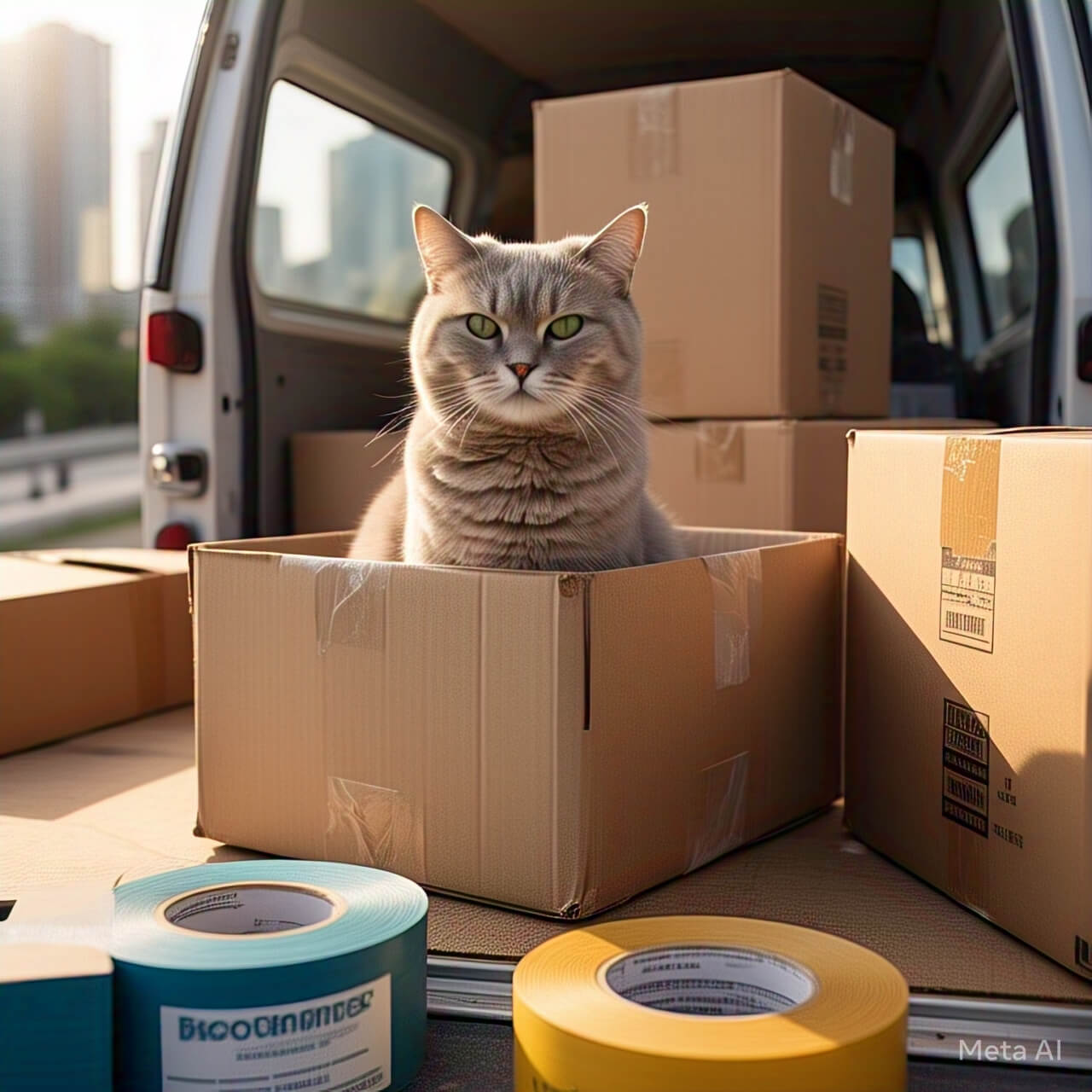How to Make a Cat Feel Safe During a Move: Moving to a new home can be stressful for cats. They love routine and familiar surroundings, so a move can make them anxious. To help your cat feel safe, you should prepare in advance. Keep their routine as normal as possible before, during, and after the move. Pack their belongings last and unpack them first in the new home.
Use calming techniques like pheromone sprays or soft music. Set up a quiet space with their bed, toys, and litter box so they feel secure. Give them time to adjust—don’t force them to explore the new house right away. Watch for signs of stress, like hiding or not eating, and comfort them with gentle petting or treats. With patience and care, your cat will soon feel at home in the new place.

10 Tips to Keep Your Cat Calm During a Move
- Keep their routine the same.
- Pack their stuff last.
- Use a calming spray.
- Set up a safe room.
- Bring familiar toys.
- Keep them in a carrier.
- Move them separately.
- Unpack their things first.
- Give them time to adjust.
- Offer treats and love.
1. Keep Your Cat’s Routine Normal Before Moving
Cats love routine, so sudden changes can stress them. Before the move, keep their feeding, playtime, and sleep schedule the same. If they sense big changes coming, they may become anxious. Stick to their usual meals, litter box cleaning, and cuddle times. This helps them feel secure even when things around them are changing. If you need to pack, do it gradually so they don’t get scared by too much movement at once.
2. Pack Your Cat’s Belongings Last
Your cat’s bed, toys, and litter box should be the last things you pack. These familiar items comfort them. If you pack them too early, your cat may feel lost in the chaos. Keep their essentials out until moving day. This way, they have their usual smells around them, which reduces stress. After moving, unpack their things first so they recognize their scent in the new home.
3. Use Calming Sprays or Diffusers
Calming sprays with cat pheromones can relax your cat during a move. These sprays mimic natural scents that make cats feel safe. Spray them in their carrier, bed, and new room before the move. You can also use plug-in diffusers in the new house. Soft music or white noise can also help calm them.
4. Set Up a Safe Room in the New Home
Choose a quiet room in the new house for your cat. Place their bed, litter box, food, and toys there. Let them stay in this room for a few days before exploring the whole house. This gives them a safe space to adjust without feeling overwhelmed.
5. Bring Familiar Toys and Blankets
Cats rely on scent to feel safe. Bring their favorite toys, blankets, or scratching posts to the new home. These items smell like them and their old home, which helps them adjust faster.
6. Keep Your Cat in a Carrier During the Move
On moving day, keep your cat in a secure carrier. This prevents them from running away in fear. Place a soft blanket inside and cover the carrier with a cloth to reduce stress.
7. Move Your Cat Separately from Furniture
Avoid taking your cat in a moving truck with loud noises. Instead, transport them in your car in a quiet, temperature-controlled space. This keeps them safe and calm.
8. Unpack Their Things First in the New Home
Set up their litter box, food, and bed as soon as you arrive. This makes the new place feel familiar faster.
9. Give Your Cat Time to Adjust
Don’t force your cat to explore. Let them come out of their safe room on their own. Some cats adjust in days, others take weeks. Be patient.
10. Offer Treats and Extra Love
Reward your cat with treats and gentle petting. This builds positive feelings about the new home.

FAQs About Moving With a Cat
| Question | Answer |
|---|---|
| How long does it take for a cat to adjust after a move? | Some cats adjust in a few days, others take weeks. Be patient. |
| Should I let my cat explore the new house right away? | No, keep them in one room first, then let them explore slowly. |
| What if my cat won’t eat after moving? | Try their favorite food. If they still don’t eat, see a vet. |
| Can I use sedatives for my cat during a move? | Ask a vet first. Natural calming methods are usually safer. |
| How do I stop my cat from hiding after moving? | Give them time. Sit quietly near them and speak softly. |
By following these steps, your cat will feel safe and comfortable in your new home.









